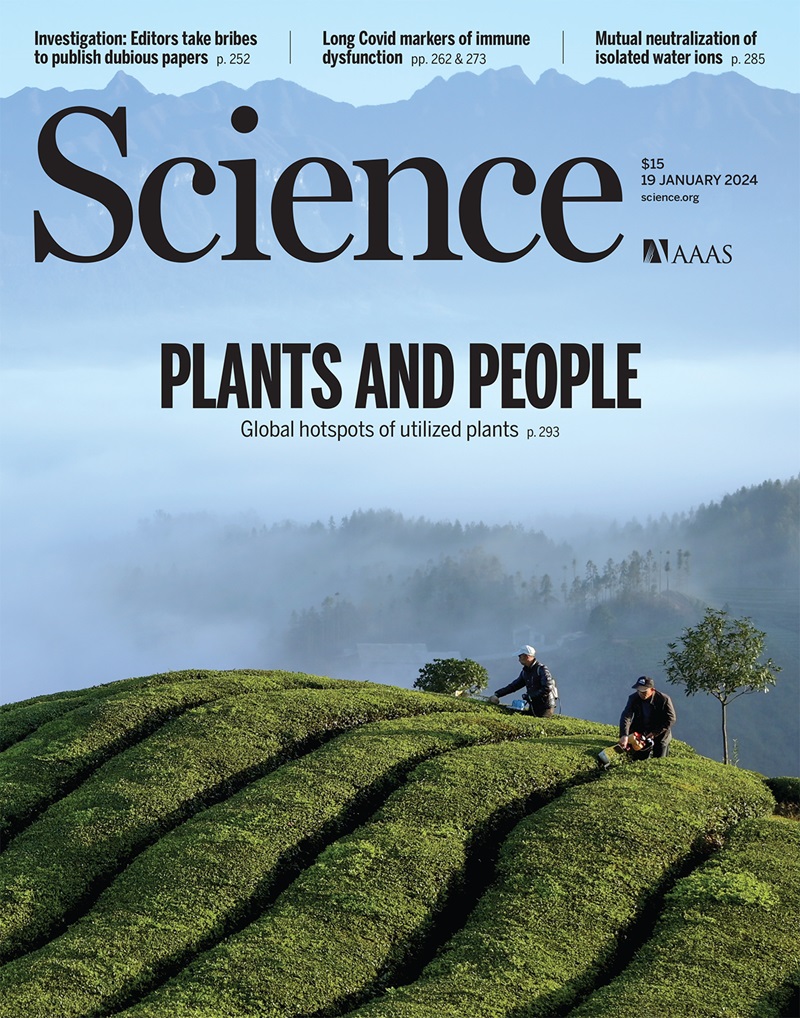CTC1-STN1-TEN1 controls DNA break repair pathway choice via DNA end resection blockade
IF 44.7
1区 综合性期刊
Q1 MULTIDISCIPLINARY SCIENCES
引用次数: 0
Abstract
Antagonistic activities of the 53BP1 axis and the tumor suppressor BRCA1-BARD1 determine whether DNA double-strand breaks (DSBs) are repaired by end joining or homologous recombination. We show that the CTC1-STN1-TEN1 (CST) complex, a central 53BP1 axis component, suppresses DNA end resection by EXO1 and the BLM-DNA2 helicase-nuclease complex but acts by distinct mechanisms in restricting these entities. Whereas BRCA1-BARD1 alleviates the CST-imposed EXO1 blockade, it has little effect on BLM-DNA2 restriction. CST mutants impaired for DNA binding or BLM–EXO1 interaction exhibit a hyper-resection phenotype and render BRCA1-deficient cells resistant to poly(ADP–ribose) polymerase (PARP) inhibitors. Our findings mechanistically define the crucial role of CST in DNA DSB repair pathway choice and have implications for understanding cancer therapy resistance stemming from dysfunction of the 53BP1 axis.
CTC1-STN1-TEN1通过DNA末端切除阻断控制DNA断裂修复途径的选择
53BP1轴和肿瘤抑制因子BRCA1-BARD1的拮抗活性决定了DNA双链断裂(DSBs)是否通过末端连接或同源重组修复。我们发现CTC1-STN1-TEN1 (CST)复合体,53BP1轴的中心成分,抑制EXO1和BLM-DNA2解旋酶-核酸酶复合体的DNA末端切除,但通过不同的机制限制这些实体。尽管BRCA1-BARD1减轻了cst施加的EXO1阻断,但它对BLM-DNA2限制的影响很小。DNA结合或BLM-EXO1相互作用受损的CST突变体表现出超切除表型,并使brca1缺陷细胞对聚(adp -核糖)聚合酶(PARP)抑制剂产生抗性。我们的研究结果从机制上定义了CST在DNA DSB修复途径选择中的关键作用,并对理解由53BP1轴功能障碍引起的癌症治疗耐药具有重要意义。
本文章由计算机程序翻译,如有差异,请以英文原文为准。
求助全文
约1分钟内获得全文
求助全文
来源期刊

Science
综合性期刊-综合性期刊
CiteScore
61.10
自引率
0.90%
发文量
0
审稿时长
2.1 months
期刊介绍:
Science is a leading outlet for scientific news, commentary, and cutting-edge research. Through its print and online incarnations, Science reaches an estimated worldwide readership of more than one million. Science’s authorship is global too, and its articles consistently rank among the world's most cited research.
Science serves as a forum for discussion of important issues related to the advancement of science by publishing material on which a consensus has been reached as well as including the presentation of minority or conflicting points of view. Accordingly, all articles published in Science—including editorials, news and comment, and book reviews—are signed and reflect the individual views of the authors and not official points of view adopted by AAAS or the institutions with which the authors are affiliated.
Science seeks to publish those papers that are most influential in their fields or across fields and that will significantly advance scientific understanding. Selected papers should present novel and broadly important data, syntheses, or concepts. They should merit recognition by the wider scientific community and general public provided by publication in Science, beyond that provided by specialty journals. Science welcomes submissions from all fields of science and from any source. The editors are committed to the prompt evaluation and publication of submitted papers while upholding high standards that support reproducibility of published research. Science is published weekly; selected papers are published online ahead of print.
 求助内容:
求助内容: 应助结果提醒方式:
应助结果提醒方式:


